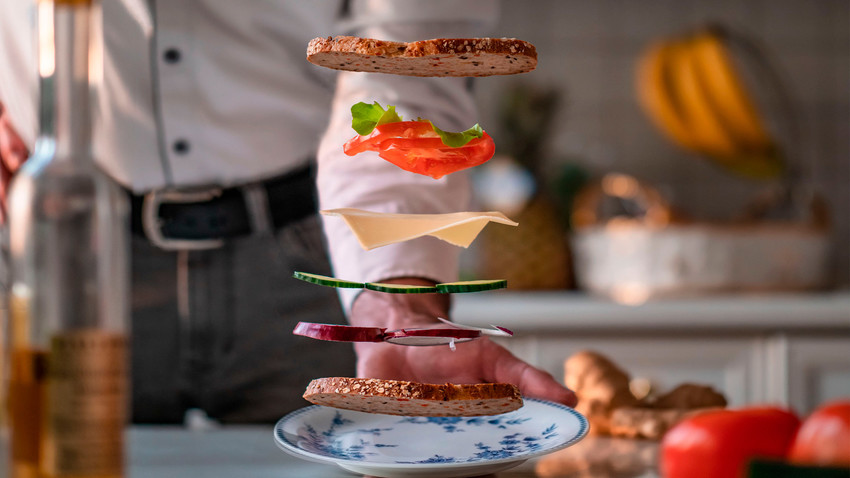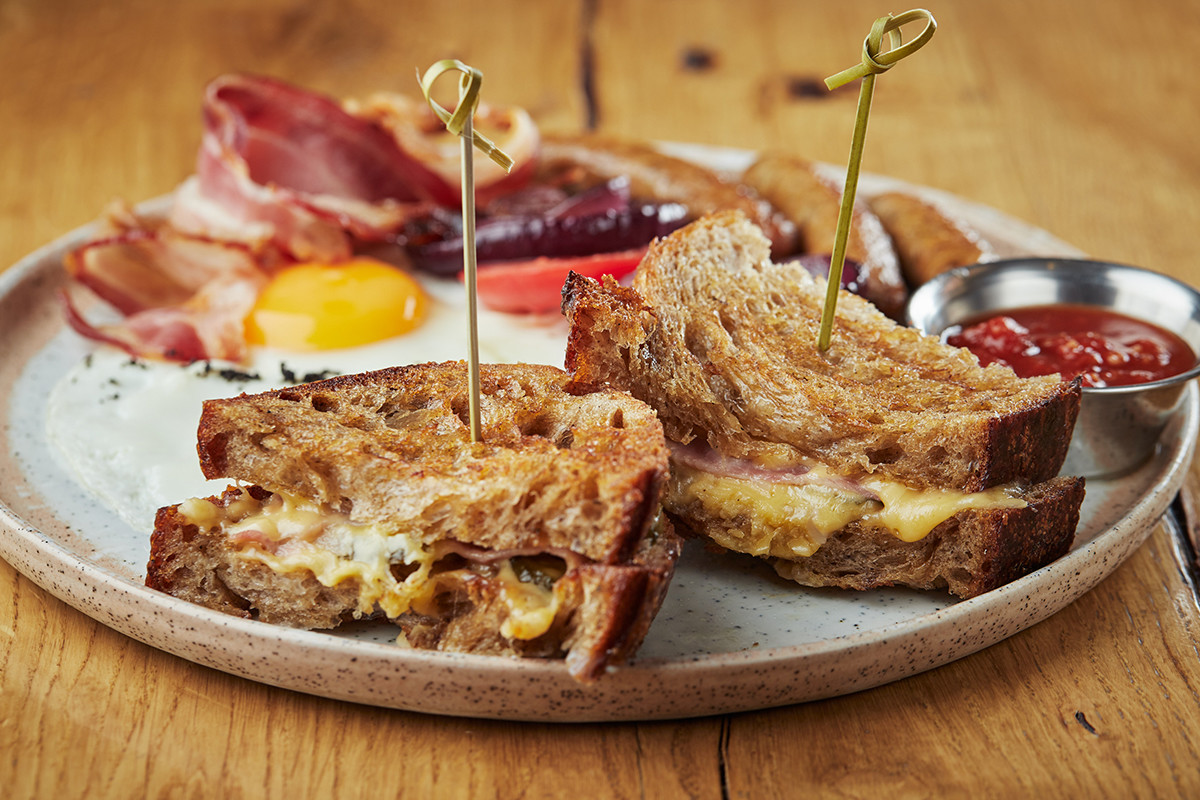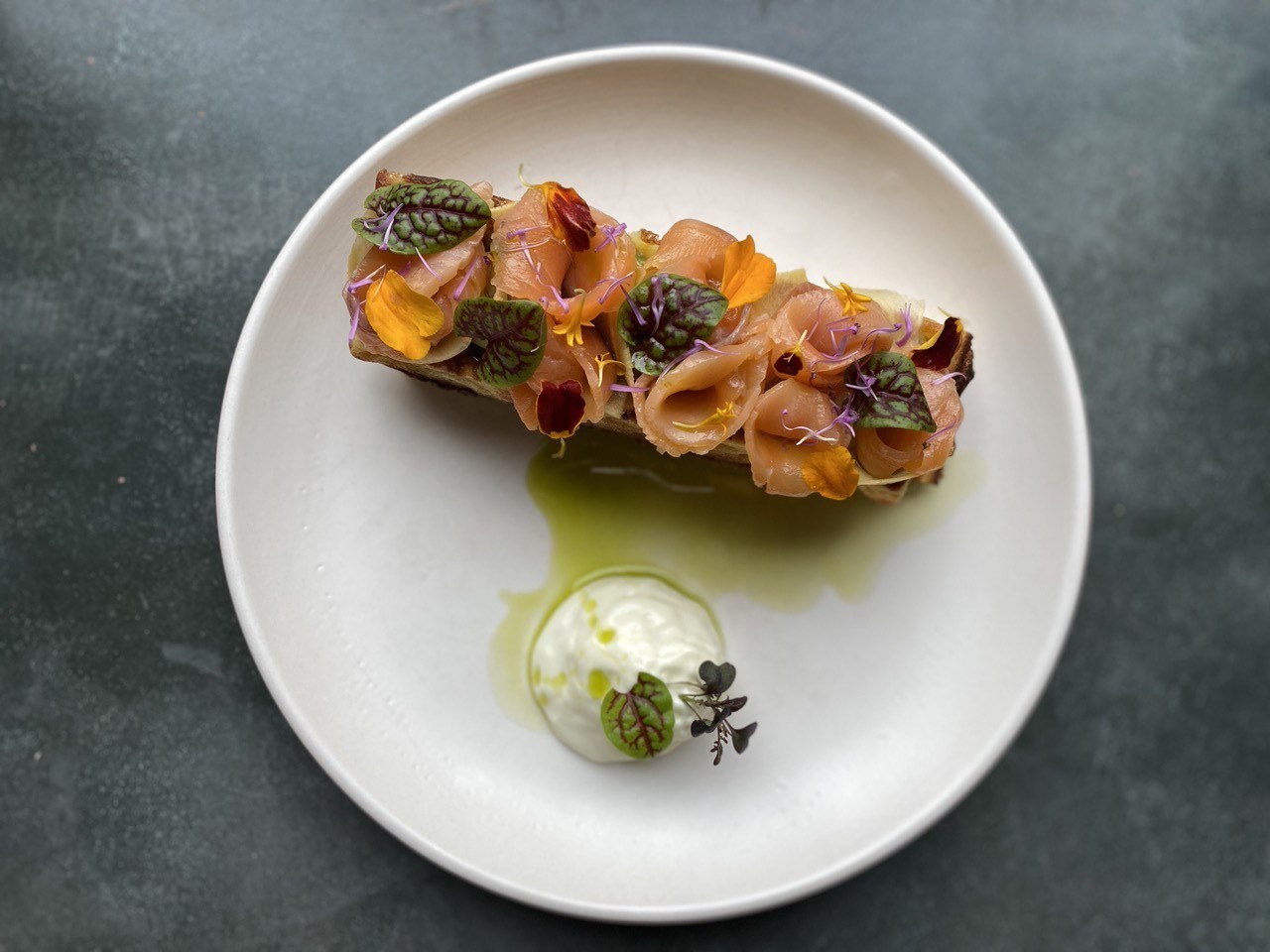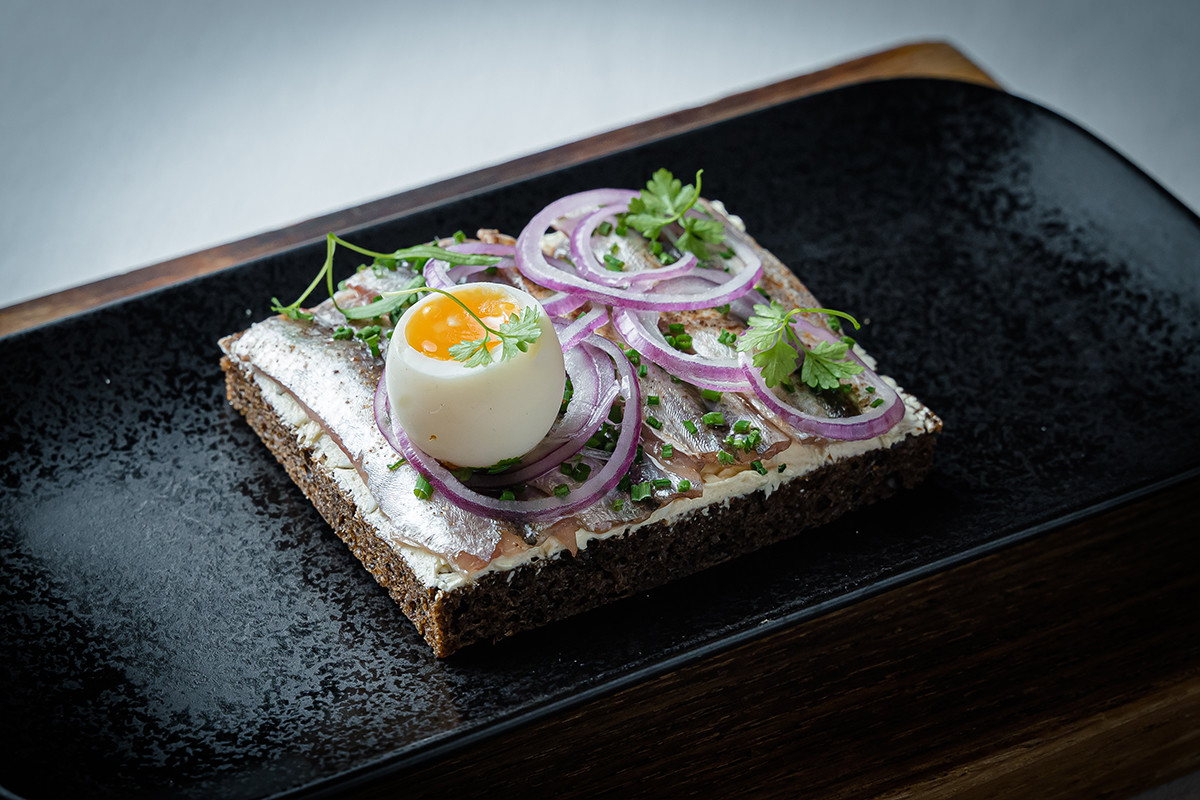4 top chefs’ Russian sandwich recipes

1. Sandwich with boiled sausage
Vladimir Chistyakov, chef at the BURO. TsUM restaurant

In the early 20th century, the variety of boiled sausage known as doktorskaya kolbasa was produced in the USSR as a dietary and even medicinal food due to its high level of protein. Although its content has changed several times since then, it remains one of the most popular items on the breakfast table.
Ingredients:
- Tomatoes - 50 g
- Butter -10 g
- Boiled sausage - 50 g
- Lettuce - 5 g
- White butter bread or brioche - 60 g
- Mayonnaise - 6 g
- Oyster sauce - 3 g
- Green onion - 5 g
- Lime - 1 pc
- Parmesan - 5 g
Preparation:
Fry a slice of bread or brioche in butter. Mix the mayonnaise (preferably homemade) with 2 ml of lime juice, plus lime zest, fried green onions and oyster sauce. Cut the tomatoes and sausage into thin slices. Pour the sauce on the bread, followed by tomato and lots of sausage slices. Garnish with herbs and grated Parmesan.
2. Sandwich with Tambov gammon
Vlad Piskunov, brand chef at the Matreshka restaurant

“Before the revolution, every Russian region had its own type of gammon, be it dry-cured, boiled or smoked. All have since sunk into oblivion. All, that is, except Tambov gammon, a kind of a boiled ham that is then smoked, not dissimilar to Westphalian ham.”
Ingredients:
- Rye bread - 2 pcs
- Gammon - 100 g
- Cheese (e.g. Tilsit) - 50 g
- Pickled cucumber – ½ pc
Preparation:
Fry both slices of rye bread in butter. Place the thinly sliced gammon on one of them, and sprinkle with grated cheese. Top with a couple of slices of pickled cucumber. Cover with the other slice, and bake until the cheese melts — about 5 minutes at 190°C.
3. Potato waffle with lightly salted salmon
Andrei Kolodyazhny, chef at the Blush gastrobar

Kolodyazhny makes unsweetened potato-based waffles, served with an original Russian ingredient — turnips marinated in raspberry vinegar. Another key ingredient is lightly salted Murmansk salmon and guacamole with the addition of seasonal apples.
Ingredients:
Waffles:
- Potato - 270 g
- Wheat flour - 130 g
- Butter (melted) - 60 ml
- Egg white - 4 pcs
- Egg yolk - 2 pcs
- Smetana - 100 g
Other:
- Lightly salted salmon - 50 g
- Apple guacamole - 100 g
- Pickled turnip - ½ pc
- Microgreens - 3 g
- Cream cheese - 30 g
Preparation:
Potato waffles:
Peel and boil the potatoes until tender, and let cool. Transfer to a mold, add all the ingredients except the egg whites, mix and run through a blender. Whisk the whites separately into a dense foam, and gently stir into the potato mix by hand with a spatula.
Place the mix in the refrigerator for 40 minutes. Cook in waffle irons (or a frying pan) until tender.
Sauce:
To prepare the apple guacamole, mix classic avocado guacamole (70 g) with lime juice, chili peppers and green apple puree (30 g).
Serving:
Place the apple guacamole and sliced salmon on the cooked waffle. Add pickled turnip slices. Garnish with microgreens, and serve with cream cheese.
4. Egg and sprat sandwich
Andrei Shmakov, chef of the Savva restaurant

Sandwiches with Latvian sprats and Borodino rye bread were an especially popular item on the Soviet festive table. The era of food shortages is long gone, but not the fondness for such sandwiches.
Ingredients:
- Rye bread - 2 slices
- Butter - 10 g
- Hard-boiled egg yolk - 1 pc
- Mustard - ¼ tsp
- Pickled sprats - 6 pcs
- Red onion - ¼ pc
- Sugar, salt to taste
- Lemon juice to taste
- Finely chopped chives
Preparation:
Mash the butter, mustard and egg yolk until smooth. Sprinkle with thinly chopped red onion, plus lemon juice, sugar and salt, and leave for 10 minutes at room temperature. Spread the butter mix on the bread, add the sprats, and sprinkle with chives and red onion.
READ MORE: 7 popular foods created in Moscow
If using any of Russia Beyond's content, partly or in full, always provide an active hyperlink to the original material.
Subscribe
to our newsletter!
Get the week's best stories straight to your inbox